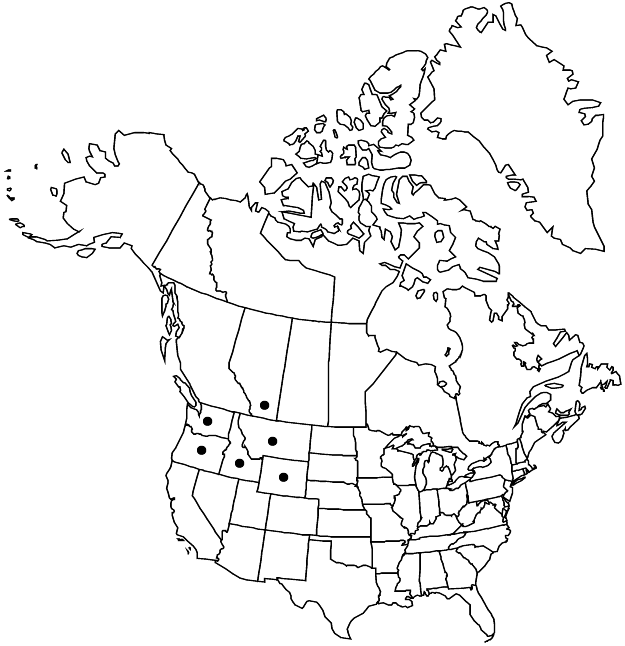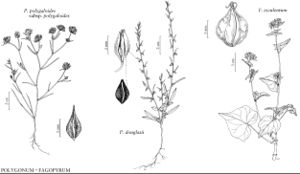familyPolygonaceae
subfamilyPolygonaceae subfam. Polygonoideae
genusPolygonum
sectionPolygonum sect. Duravia
speciesPolygonum polygaloides
Polygonum polygaloides subsp. polygaloides
Synonyms: Polygonum polygaloides var. montanum Brenckle
Revision as of 20:06, 24 September 2019 by FNA>Volume Importer
Stems 5–25 cm. Inflorescences mostly confined to tips of branches, globose to ovoid, 7–14 × 8–15 mm; bracts ascending or appressed, oblong to broadly ovate or elliptic, 4–9 mm, ± rigid, margins flat, undulate, or sometimes revolute, white, scarious portion 0.5–1 mm wide; midveins thin, lateral veins thickened and prominent adaxially. Flowers: perianth 2.5–3 mm; tube 19–30% of perianth length; tepals white or pink; perianth tube and base of tepals often ± crisped or undulate; stamens 8. Achenes dark brown, ovate-lanceolate, 1.3–2.1 mm, reticulate with longitudinal ridges, dull.
Phenology: Flowering May–Aug.
Habitat: Dry beds of ponds and watercourses, roadsides, drainage pits
Elevation: 500-1800 m
Distribution

Alta., Idaho, Mont., Oreg., Wash., Wyo.
Discussion
Selected References
None.
Lower Taxa
None.
